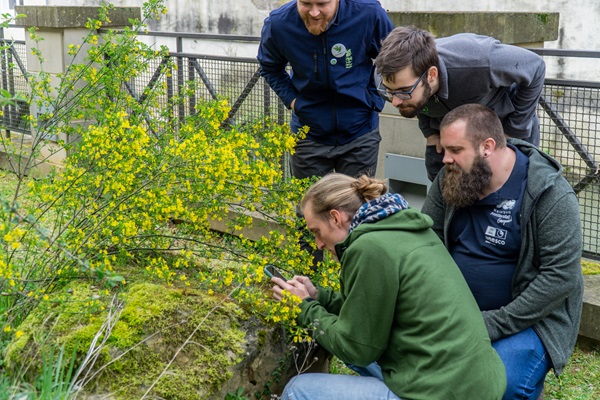 Credit: MNHN
Credit: MNHN
The sixth edition of the City Nature Challenge (CNC) in Luxembourg will take place from 26 to 29 April 2024.
Globally, this action now extends to more than 500 regions on six continents simultaneously. In Luxembourg, the National Museum of Natural History (Musée national d'histoire naturelle Luxembourg - MNHN), also known as the “natur musée” and its partners coordinate the initiative.
Run by the community science teams of the California Academy of Sciences in San Francisco and the Natural History Museum of Los Angeles County, the CNC calls on everyone to observe and submit photos of wild plants, animals and mushrooms using the free iNaturalist mobile app. It is a game, a friendly challenge on a global scale, to see which region will manage to collect the most data, aiming to record together as much data as possible on wild biodiversity.
All of this data is generated by citizens on iNaturalist, identified and coordinated by the museum and scientific organisations. They help governing bodies make informed conservation decisions that enable human and natural communities to thrive.
The public will have an opportunity to find, document and share wild biodiversity wherever they are in Luxembourg. During the weekend of April 26, several events will take place across Luxembourg as part of the CNC programme.
“Citizen science” is gaining more and more importance in the very specific field of biodiversity data collection. In principle, anyone interested in nature can help document wild animals, plants and mushrooms simply by using the iNaturalist mobile app.
iNaturalist is one of the most popular nature discovery apps in the world. Through its connected communities, it helps identify plants and animals detected and photographed by users. The MNHN officially joined this network of scientists in 2019. The museum manages the Luxembourg portal of this global network – iNaturalist.lu.
Specific projects such as “Aktioun Päiperlek” (butterfly action) or “Neobiota Luxembourg” make it possible to collect numerous and important data through a fun and simple approach. The species are photographed and identified via the iNaturalist application. They can then be consulted on the internet, and are validated by the community. Finally, this data is fed into scientific databases by the museum such as the Global Biodiversity Information Facility to help scientists find and use this data in their research.








